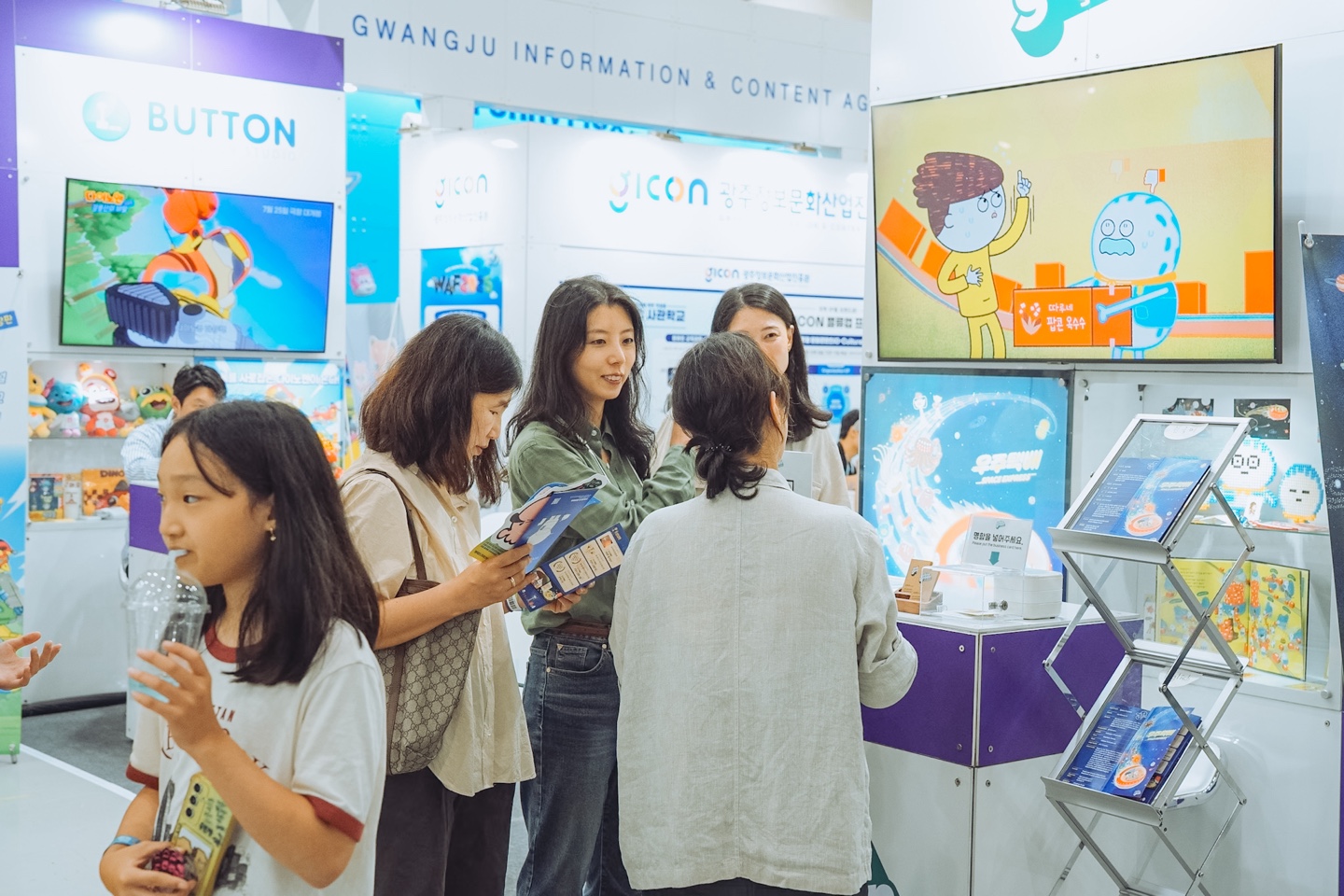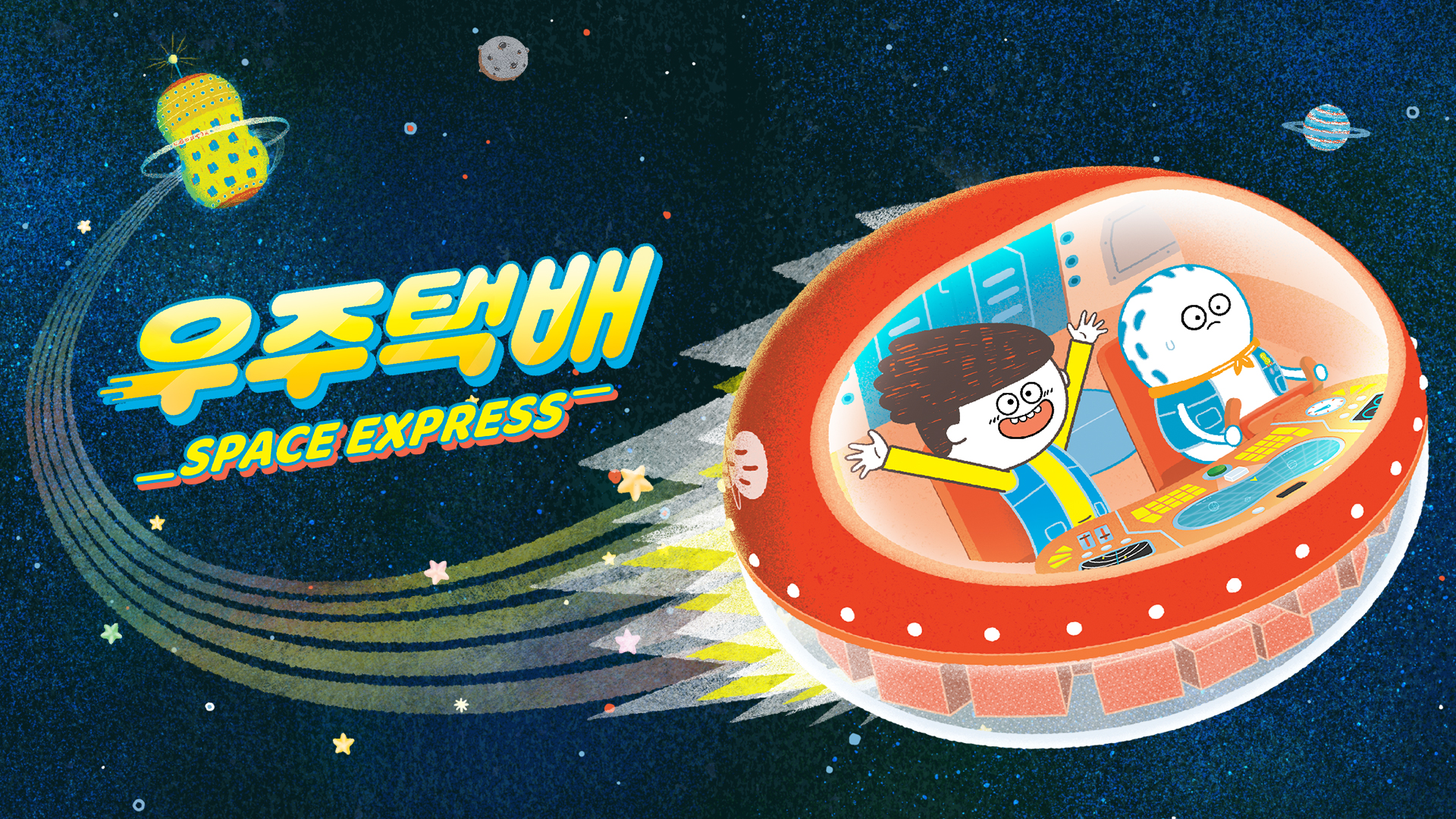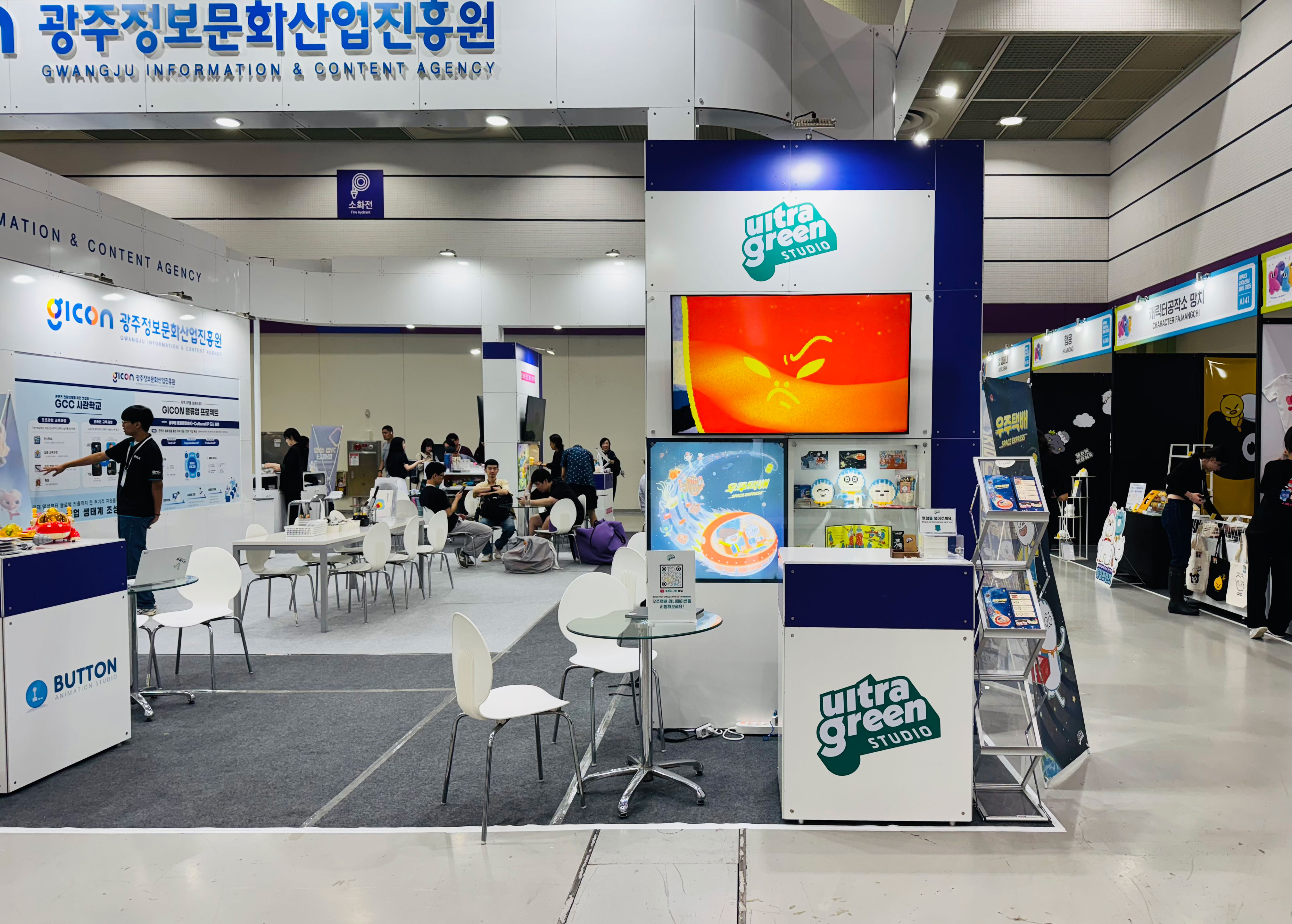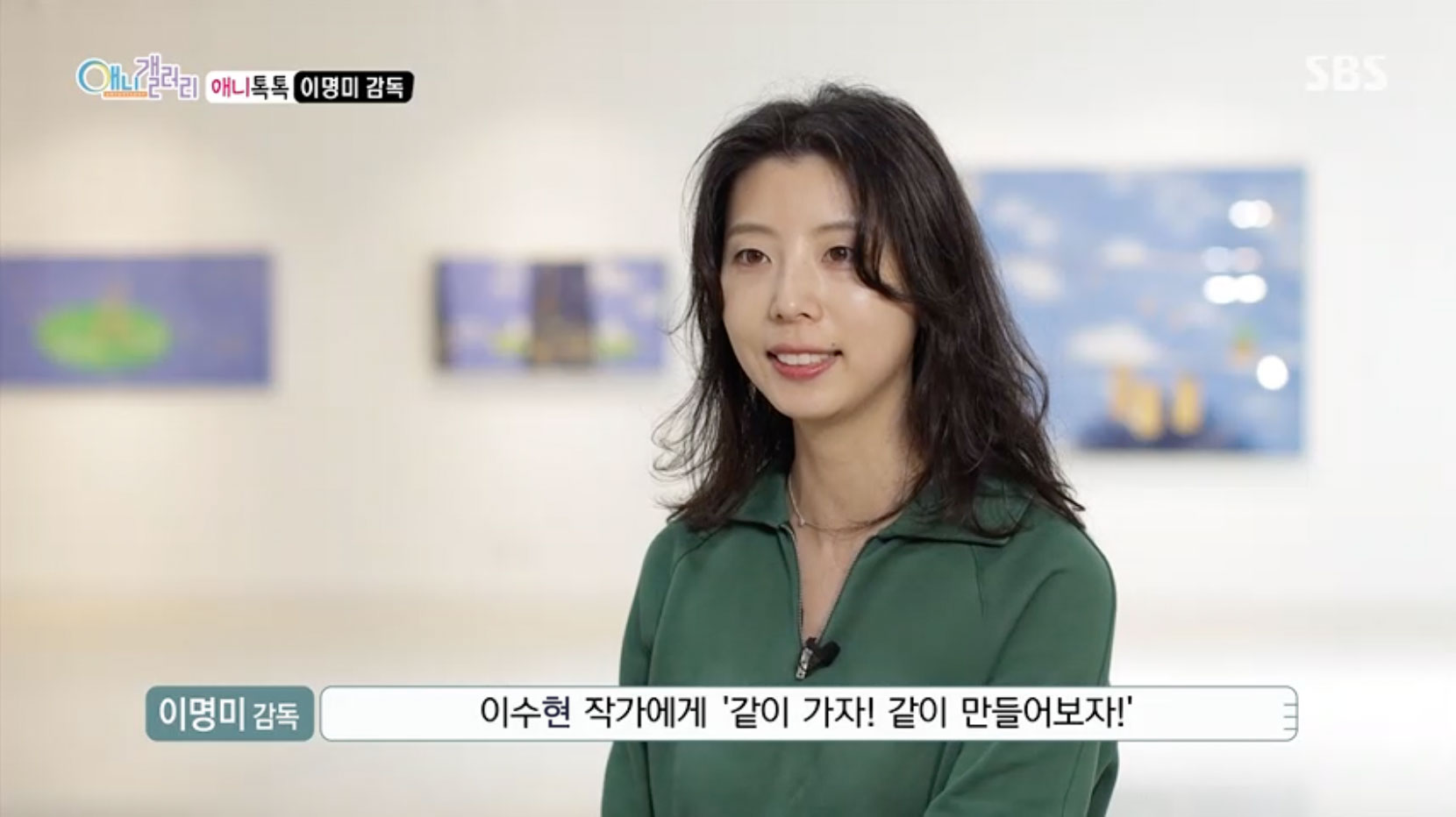[MISSION] [INTERVIEW] Inside Korea Character Licensing Fair 2025: Ultragreen Studio’s Space-Themed Journey
2025-08-04
As Korean animation continues to capture attention on the global stage, independent studios are emerging as key storytellers shaping the industry’s future. With Korea’s growing influence in character licensing and creative media, events like the Korea Character Licensing Fair serve as a vital platform for original content to reach wider audiences.
To better understand this evolving landscape, I spoke with Myeongmi Lee, Director and Executive Producer at Ultragreen Studio, who showcased the studio’s flagship animation Space Express at the 2025 Korea Character Licensing Fair. Her work blends creativity with cultural vision, offering a glimpse into how small studios can make a global impact.
In the following exclusive email interview from July 14-30, Lee shares her inspiration behind Space Express, her aspirations for Korean animation, and the journey of building a universe that dreams as big as space itself.
Q1. To begin with, could you briefly introduce yourself and your journey into the world of animation and storytelling?
Since childhood, I have dreamed of becoming a comic artist. I enrolled in a university program that specialised in comics and animation, where I had the opportunity to create my first animated project as part of a core course. I found the process of bringing still images to life deeply fascinating. That experience led me to pursue 2D animation as my major, and I have continued creating animation ever since.
Q2. For those who are hearing about Ultragreen Studio for the first time, could you introduce your studio and its creative focus?
Ultragreen Studio is a small animation studio founded on July 14, 2022. The name 'Ultragreen' was inspired by the vibrant energy of a lush summer forest in July. Our creative focus lies in adapting original works such as webtoons and picture books into engaging animated content. Our flagship IP is Space Express, an animated series based on a children’s picture book.
Q3. Your flagship IP, Space Express, stands out with its distinctive characters and adventurous concept. What was the initial idea behind this project, and how did it evolve into its current form?
Space Express is an animated adaptation of a picture book of the same name by artist Suhyun Lee. Suhyun and I were university classmates, and after graduation, she pursued a career as a freelance illustrator. Space Express was her first original creation published under her own name, and when I read it, I immediately felt that the illustrations and concept had strong potential for expansion into animation. The characters were expressive, and the whimsical universe they lived in felt alive. I wanted to preserve that unique charm in motion, so I invited Suhyun to join the project as the art director. Working closely together, we were able to bring her world to life in a way that felt true to the original while introducing new visual elements for animation.
Q4. Could you tell us more about the main characters, Taru, Akong, and the space delivery team? What inspired their personalities and designs?
Taru is a 12-year-old Earthling boy who has always been fascinated by space. His lifelong dream is to explore the universe, and by a twist of fate, he finds himself at the Space Express logistics centre. There, he meets Akong, a seasoned delivery worker, and together they become an unlikely duo, travelling across the galaxy to deliver packages to alien customers. Taru is endlessly optimistic and full of energy, and his comet-tail-shaped hair visually reflects his adventurous spirit and curiosity.
Akong, in contrast, is the top-ranked delivery worker at Space Express. He prefers to work alone, is extremely meticulous, and takes great pride in doing things perfectly. His world is disrupted when Taru becomes his unexpected partner. Although all the Space Express employees are peanut-shaped aliens who look alike, Akong stands out with his signature scarf and a #1 employee badge, both elements that visually set him apart and emphasise his role as the protagonist. His detailed personality adds a grounded counterbalance to Taru’s bright energy, and their dynamic lies at the heart of the series.

Q5. The animation industry is incredibly competitive. How do you approach creating original stories that stand out, especially for young audiences?
In Korea, the market is especially strong for 3D animation aimed at young children. While I also enjoy 3D animation, I have a deep affection for traditional 2D animation that’s drawn by hand, frame by frame. There’s a unique warmth and sincerity to that approach, and I believe many children still appreciate that hand-crafted feel. With Space Express, we wanted to capture that sense of intimacy by creating characters that are simple enough for children to draw themselves, yet expressive enough to carry an emotional narrative.
Our goal was to make the series feel like a picture book in motion, visually inviting and nostalgic. On the storytelling side, we carefully design our episodes to be entertaining for children but also enjoyable for their parents. That intergenerational appeal helps create a deeper connection. Balancing visual simplicity with layered storytelling has been our key strategy in standing out within such a competitive space.
Q6. What are some challenges you faced while developing Space Express, and how did you overcome them?
Before founding the studio, I worked as a solo animation creator and mostly produced short animations with very limited running times. So, developing Space Express marked my first experience with a longer-format project, and naturally, there were many growing pains along the way.
One of the biggest challenges was building a team from scratch and learning how to manage the overall workload, communication, and timelines effectively. All of it was completely new to me. What really helped was having a clear directorial vision from the beginning. I kept the final scenes and the overall story structure firmly in mind at all times. That clarity allowed me to give precise and timely direction to the team, which improved our workflow and helped us stay on track during production.
Q7. Ultragreen Studio has participated in several development and support programs, including GICON. How have these programs helped shape your growth?
For us, securing production funding for Space Express was the most urgent need. Fortunately, we were selected for a support program from GICON, which provided us not only with production funds but also with office space so our team could work together more effectively.
Thanks to this support, we were able to complete both the pilot episode and the first full episode of the series. After production, we also received help in participating in major events such as the Gwangju ACE Fair and the Seoul Character Licensing Fair.
These programs have been incredibly helpful. They not only enabled us to produce our work but also prepared us for the business side of animation, including marketing and studio development. This support played a key role in helping us grow into a more well-rounded creative company.

Q8. How did you prepare for your participation in the Korea Character Licensing Fair 2025? What was your goal for being there this year?
As I mentioned earlier, we were able to take part in the fair through GICON's marketing support program, which gave us a booth in the shared exhibition area. That alone made a big difference in how we could present our work.
Our main goal this year was to promote ourselves to both domestic and international buyers in the B2B space. Just as important, we wanted to receive direct feedback from viewers, creators, and industry professionals. Observing how people responded to Space Express in person gave us valuable insights that will shape the direction of our next episodes and our outreach strategy.
Q9. Could you tell us about your experience at the fair? How was the overall atmosphere, and what were some highlights of your time there?
Since it was our first time participating in the Character Licensing Fair, many visitors were surprised and said things like, "I've never seen this animation before!" That kind of reaction was very encouraging for us. The atmosphere throughout the venue was lively and engaging. To be honest, there were more general visitors than business buyers, but their excitement added a positive energy to the event.
One of the most memorable moments for me was when families came up and mentioned they were already familiar with the original Space Express picture book. It was a heartwarming moment, and I felt genuinely grateful. I gave them some Space Express stickers as a small thank-you and kindly asked them to support the animation version as well.
Q10. How did audiences and industry visitors respond to Space Express during the event? Were there any surprising reactions or feedback?
The most frequent response we received was that the project felt “unique,” which was very meaningful to us. Visitors seemed genuinely intrigued by the world and tone of Space Express, especially those who were encountering it for the first time. For attendees who already knew the original picture book, it was a great opportunity to share that an animated version now exists.
We also took the chance to introduce our studio’s YouTube channel, where the animation is currently available. Many visitors were excited to check it out, and quite a few followed us on the spot. That kind of direct engagement and encouragement gave us a strong sense of momentum moving forward.
Q11. What kind of conversations or connections did you have at the fair? Were there any that stood out to you?
At the shared booth, I had the opportunity to meet and introduce myself to the head of a well-established animation studio that has produced several successful TV series. It was my first time speaking with someone from that studio, and I was truly grateful for the chance to present both our studio and the Space Express project.
The conversation went beyond a simple introduction. It gave me valuable insights into the current landscape of the animation industry, including challenges and trends I hadn’t been fully aware of before. That exchange left a strong impression on me and has already influenced how I’m thinking about our future direction.
Q12. From your perspective, how important is the Korea Character Licensing Fair for independent studios like yours?
As a creator who has transitioned into running a studio, I tend to prefer working quietly behind the scenes. Engaging in new meetings or participating in public events doesn’t always come naturally to me. But I’ve come to realise that the content we create is ultimately meant to be shared.
A fair like this provides a rare and valuable opportunity to step out of the production space and experience how a diverse audience responds to our work in real time. Seeing those reactions firsthand offers perspectives we could never get from behind a screen. That alone makes events like this incredibly meaningful for studios like ours.
Q13. What were you hoping to achieve through your booth or presentation at the fair this year?
Our main goal this year was to find an investment or a co-production partner to help us develop Space Express into a full-length broadcast series. While we were excited to showcase the project and hear audience reactions, the core purpose behind our participation was to build meaningful connections that could support the next stage of production.

Q14. How do you think events like this shape the future of Korean animation on the global stage?
Events like this attract buyers and industry professionals from various countries, including animation studios, distributors, and broadcasters, who are actively looking to discover or acquire Korean content. Since the domestic market for animation is relatively small, I believe global expansion is not just beneficial but essential. By providing creators with exposure to international opportunities, fairs like this play a key role in broadening the reach and future potential of Korean animation.
Q15. Looking ahead, what are your plans for Space Express and Ultragreen Studio after the fair? Are there any upcoming collaborations or projects?
If I have a dream, it’s for Space Express’s characters, Taru and Akong, to grow into beloved icons that represent Korea’s aviation and space sectors. My ultimate goal is to one day see them launched into real space. To move closer to that vision, I plan to continue producing more Space Express episodes and build a stronger connection with audiences. We’re also exploring new partnerships that could help us reach wider viewers. I would be truly grateful if you could keep following our journey with warm interest and support.
Q16. Lastly, is there anything you would like to share with international readers of Korea.net who are interested in Korean animation and your work?
Although we are still a small studio, I’m grateful for the chance to share our story. Through Space Express, we’re not only telling an adventure, but also learning and growing with each step. For anyone interested in animation or creative work, I hope our journey shows that even modest beginnings can lead to meaningful impact if you remain persistent, curious, and open to feedback. We’ll continue doing our best to bring Space Express to life and share it with audiences across the world. Thank you for your interest, and please continue to support us as we grow.
My interview with Myeongmi Lee made one thing abundantly clear: creating a lasting impact in animation isn’t just about producing content, it’s about building meaning, identity, and connection. Her vision for Space Express goes beyond entertainment, offering young audiences stories that inspire imagination, courage, and a sense of purpose.
Even more importantly, her reflections show that small studios, when driven by passion and persistence, can dream big and contribute powerfully to national culture and global storytelling.
As Korean animation reaches new milestones, creators like Lee are shaping its future with originality, heart, and the belief that characters like Taru and Akong might one day soar not only through screens but beyond the stars.
How about this article?
- Like7
- Support0
- Amazing3
- Sad0
- Curious0
- Insightful0


